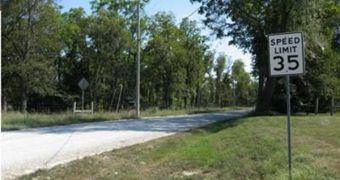Most gravel roads across the United States have circulation signs that caution or force drivers to reduce speed to a certain level, so as to avoid accidents and drivers getting caught unprepared by unexpected slides of their vehicles. Despite the federal regulations on the matter, researchers have learned that people actually drive on this type of roads with a speed they are comfortable with. The interesting thing is that all drivers feel comfortable at different speeds, and that, when they go as far as they feel good with, they are less likely to crash their cars.
Kansas State University Associate Professor of civil engineering and faculty member Sunanda Dissanayake said that, “We found that people are driving at speeds based on their perceptions and existing conditions – regardless of the speed limit.” Together with civil engineering graduate student Litao Liu, the KSU expert analyzed the behavior of large numbers of drivers on gravel roads, as well as the factors that determined the speed with which these people were traveling.
In Kansas, more than 58 percent of all roads are made of gravel. That makes for about 78,000 miles of such streets, of which most are regulated to be traveled at just 55 miles per hour. While in some of the states’ 105 counties the actual speed limit may vary depending on the specific conditions of the areas, most of the roads are regulated from a state level. Because the limit is known throughout the state, marking signs are not usually placed on the sides of the roads.
However, the situation is different in the Johnson County, where authorities decided to reduce the maximum legal speed to just 35 miles per hour. This is very confusing for drivers coming in from other counties or just passing through, because this region is the only one with markers stating the speed limit. For more than a week, the team analyzed data collected by automatic speed readers, installed on 41 locations around Kansas, all on gravel roads. They learned that the average speed of vehicles traveling these roads was higher on wider and more traffic-free roads, and more reduced on tighter, more circulated ones.
“Johnson County does not gain anything by lowering the speed limit and posting it. Spending money on posting and maintaining signs in this aspect is pointless, really. I can't say there is any harm in the posting. The only thing is that you might lose the respect of the drivers. The majority are driving under the speed limit, so why do you need to lower it?” Dissanayake added. The researchers will present their finds on April 14th, at the Kansas Transportation Engineering Conference, held at KSU.

 14 DAY TRIAL //
14 DAY TRIAL //